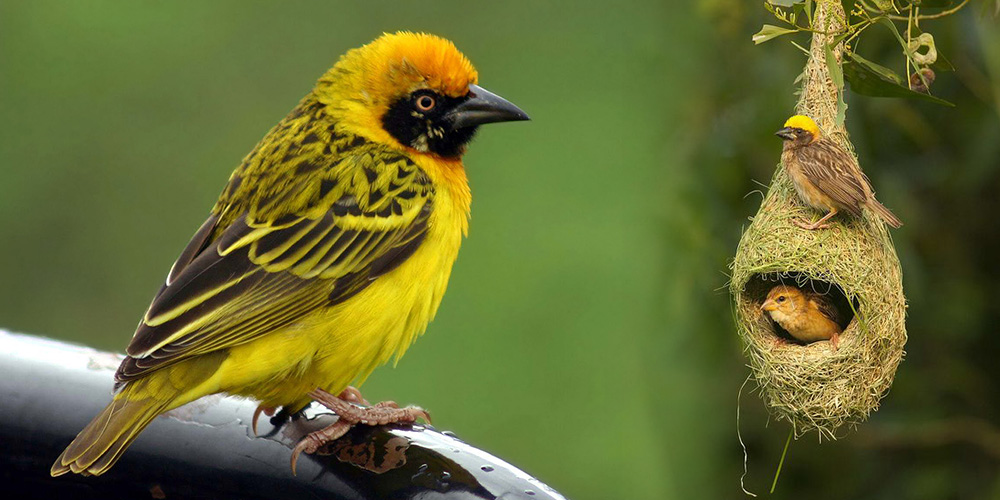
The Baya weaver is a weaverbird found across the Indian Subcontinent and Southeast Asia. Flocks of these birds are found in grasslands, cultivated areas, scrub and secondary growth and they are best known for their hanging retort shaped nests woven from leaves. These nest colonies are usually found on thorny trees or palm fronds and the nests are often built near water or hanging over water where predators cannot reach easily. They are widespread and common within their range but are prone to local, seasonal movements mainly in response to rain and food availability.
These are sparrow-sized (15 cm) and in their non-breeding plumage, both males and females resemble female house sparrows. They have a stout conical bill and a short square tail. Non-breeding males and females look alike, dark brown streaked fulvous buff above, plain (unstreaked) whitish fulvous below, eyebrow long and buff coloured, bill is horn coloured and no mask. Breeding males have a bright yellow crown, dark brown mask, blackish brown bill, upper parts are dark brown streaked with yellow, with a yellow breast and cream buff below.
Home Making: Weaver Bird
Baya weavers are social and gregarious birds. They forage in flocks for seeds, both on the plants and on the ground. Flocks fly in close formations, often performing complicated manoeuvres. They are known to glean paddy and other grain in harvested fields, and occasionally damage ripening crops and are therefore sometimes considered as pests. They roost in reed-beds bordering water bodies. They depend on wild grasses such as Guinea grass as well as crops like rice for both their food (feeding on seedlings in the germination stage as well as on early stages of grain) and nesting material. They also feed on insects (including butterflies), sometimes taking small frogs, geckos and molluscs, especially to feed their young. Their seasonal movements are governed by food availability. Their calls are a continuous chit-chit-…sometimes ending in a wheezy cheee-eee-ee that is produced by males in a chorus. A lower intensity call is produced in the non-breeding season.
They are occasionally known to descend to the ground and indulge in dust bathing In captivity, individuals are known to form stable peck orders
A widespread folk belief in India is that the baya sticks fireflies with mud to the nest walls to light up the interior of the nest at night.Clay, however is known to be used in the nests of baya weavers. Males alone have been seen to add blobs of mud and dung to the nest chamber prior to pairing with a female. It has been suggested that the clay may help to stabilise the nest in strong winds.
In earlier times, the baya weaver was trained by street performers in India for entertainment. They could pick up objects at the command of their trainers They were trained to fire toy cannons, string beads, pick up coins and other objects.
Courtesy: Wikipedia





No Comments